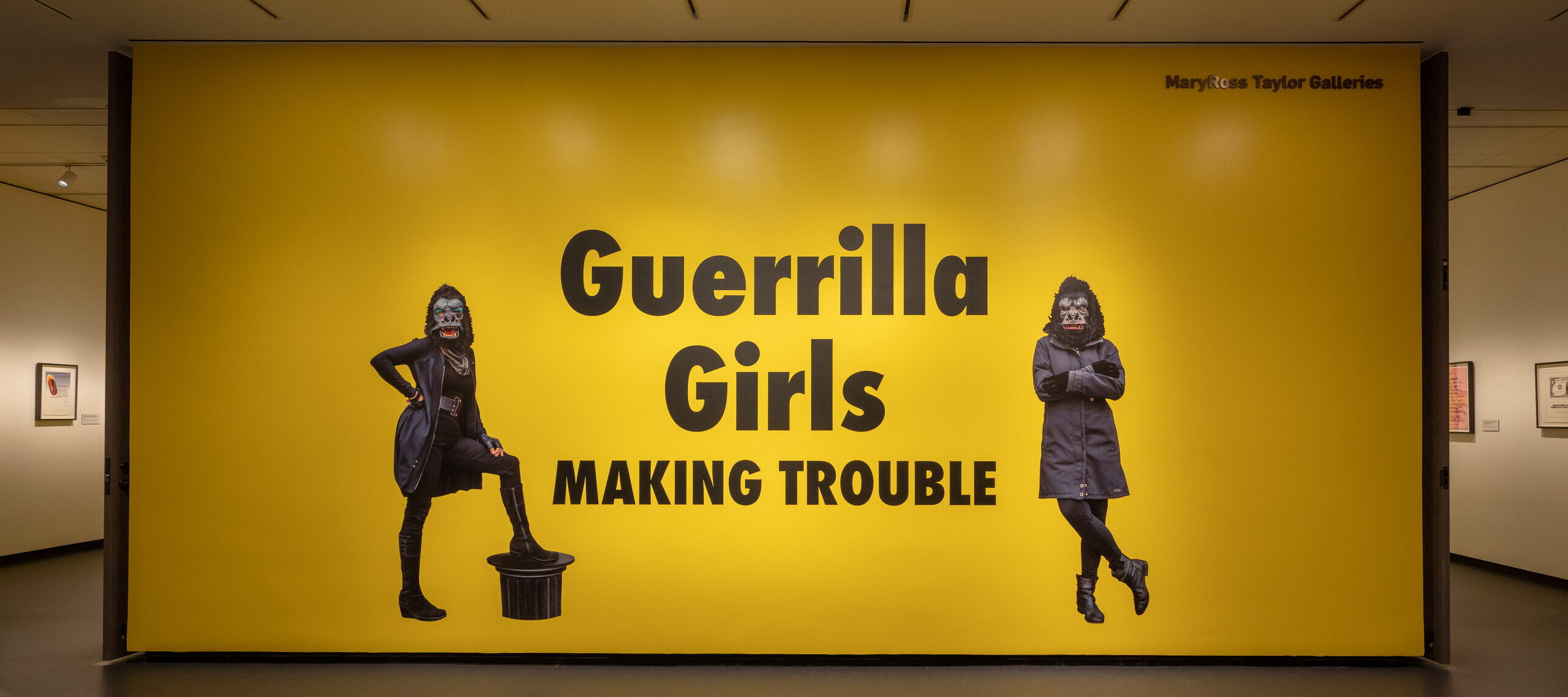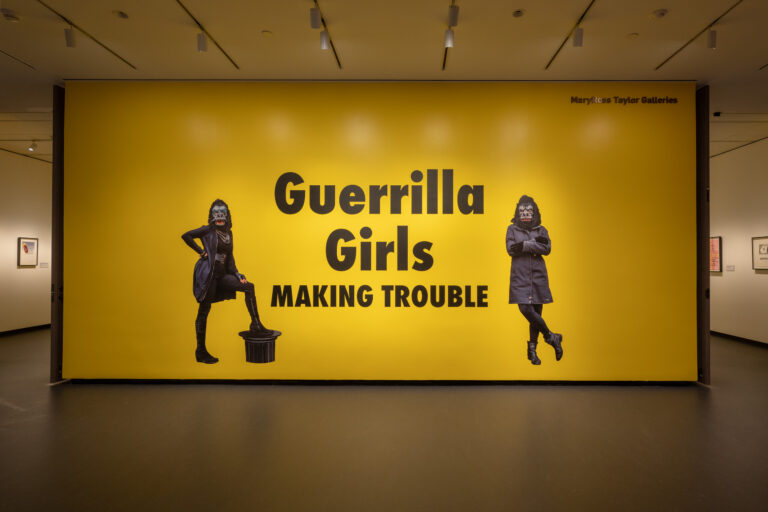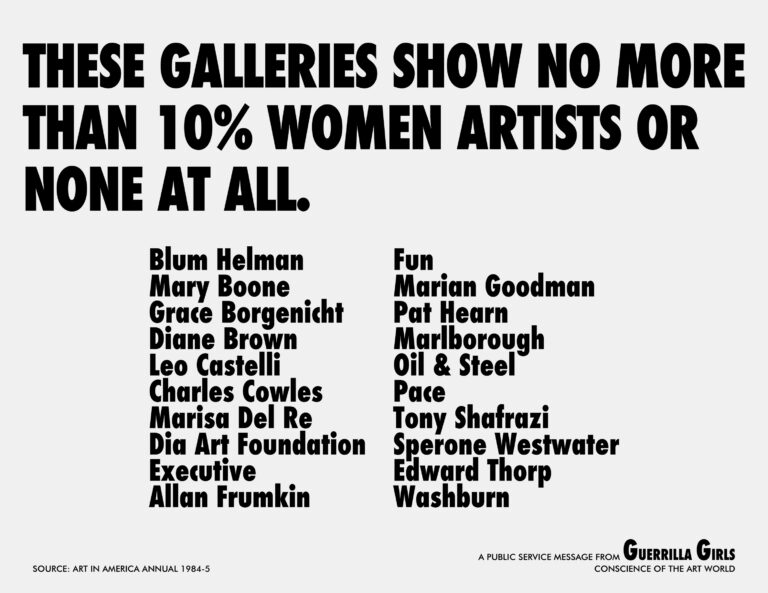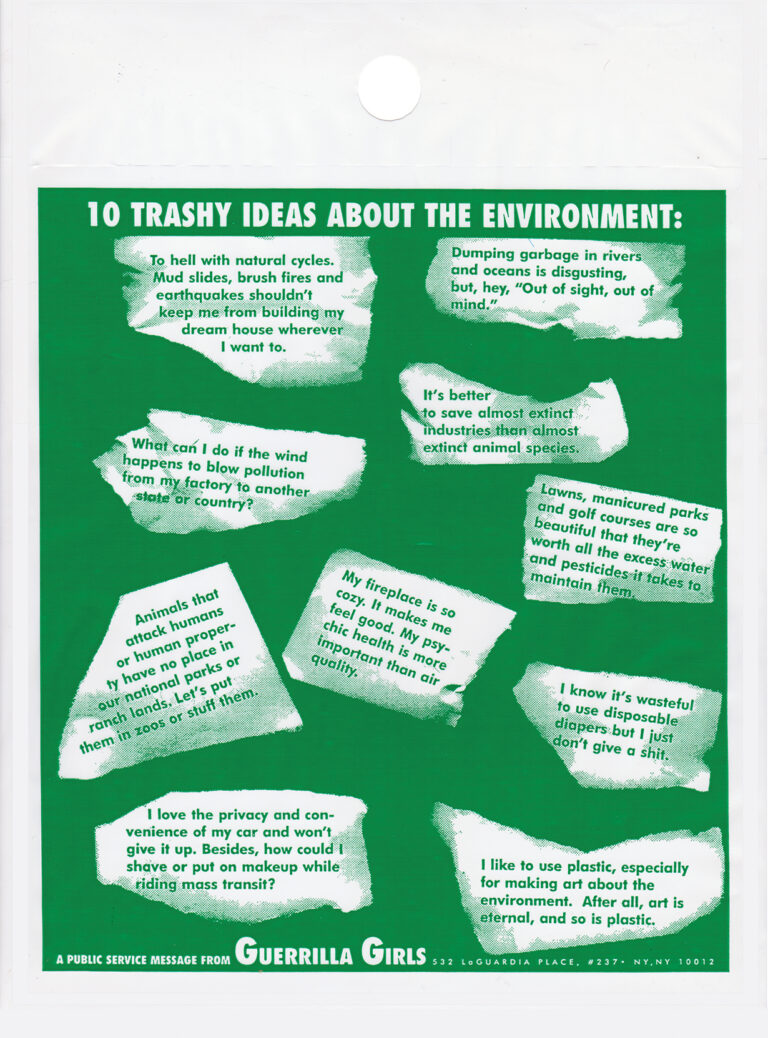This year marks the Guerrilla Girls’ 40th anniversary. NMWA celebrates this milestone with an exhibition of the group’s posters from the 1980s and ’90s alongside recent prints.
Simple Facts, Obvious Conclusions
The Guerrilla Girls burst into the art world with their bold text- and graphics-based prints. The collective formed in the wake of the Museum of Modern Art’s 1984 exhibition An International Survey of Recent Painting and Sculpture. Although the exhibition claimed to represent the best artists of the time, fewer than 10% were women and none were artists of color. Protests outside the museum failed to garner attention, so members of the group set out to prove exactly how bad the art world was for women and non-white artists.
The Guerrilla Girls’ earliest works eschew imagery in favor of bold, black-and-white text with direct messages. These Galleries Show No More Than 10% Women Artists or None at All (1985) brazenly names twenty preeminent New York City galleries that disproportionately represented men. Institutions were not the group’s only targets. What Do These Artists Have in Common? (1985) lists 42 prominent artists—mostly white men—who allowed their art to be shown in spaces that exhibited work by very few, if any, women artists.
Although their first focus was gender disparity in the visual arts, in later works the Guerrilla Girls cast a critical eye on other fields, including film, theater, politics, and pop culture. The group adapted their material, techniques, and style to suit their subject matter, often incorporating color, graphics, and humor. 10 Trashy Ideas About the Environment (1994) contains sardonic notes on the environment, ironically printed on a plastic bag. As Guerrilla Girl Eva Hesse said, “We found out quickly that humor gets people involved.”
Do You Know the Guerrilla Girls?
Members of the Guerrilla Girls wear gorilla masks in public and adopt the names of deceased women artists and writers as pseudonyms. The idea to don simian disguises emerged from a humorous mistake. At an early meeting, one spelling-challenged member wrote “Gorilla” instead of “Guerrilla” in her notes. In addition to anonymity, the masks embolden them to be more outspoken. “You’d be surprised at what comes out of your mouth when you wear a gorilla mask,” they’ve said.
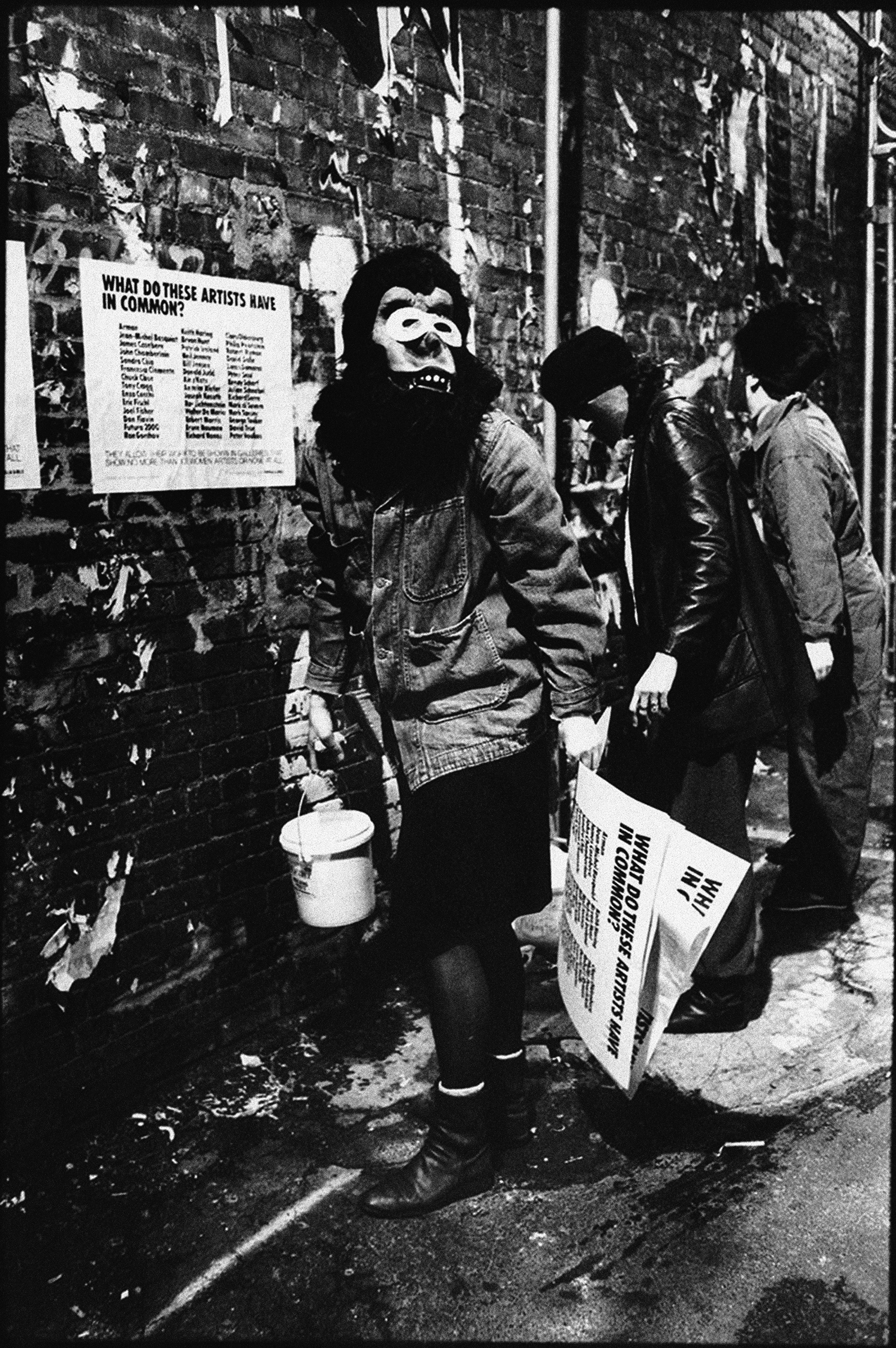
Their aliases also buffer the Guerrilla Girls from retribution in the art world, which they both participate in and criticize. Guerrilla Girls’ Identities Exposed! (1990) purportedly lists individual members, with a touch of their signature cheekiness. “Is this or isn’t this a real list of Guerrilla Girls?” a statement released with the print asks. “Only the people on it know for sure.” With more than five hundred women named, there is strength and protection in numbers.
The Guerrilla Girls and NMWA
Many of the prints in the exhibition, including the Guerrilla Girls’ first two portfolios of posters from 1985 to 2005 (“Guerrilla Girls Talk Back: The First Five Years” and “Guerrilla Girls Talk Back: Portfolio 2”) were donated to the museum by longtime NMWA supporter and Advisory Board member Steven Scott. Inspired by the Guerrilla Girls’ direct missives, Scott has been committed to equitable representation of men and women at his own gallery in Baltimore since it opened in 1988.
The exhibition also debuts four recent acquisitions, including one of the collective’s newest works, Guerrilla Girls ManifestA: For Art Museums Everywhere (2024). Featuring directives for arts institutions to adhere to equitable and principled practices, the print is both a call-out and call to action, installed at NMWA across a prominent gallery wall as a large-scale vinyl print.
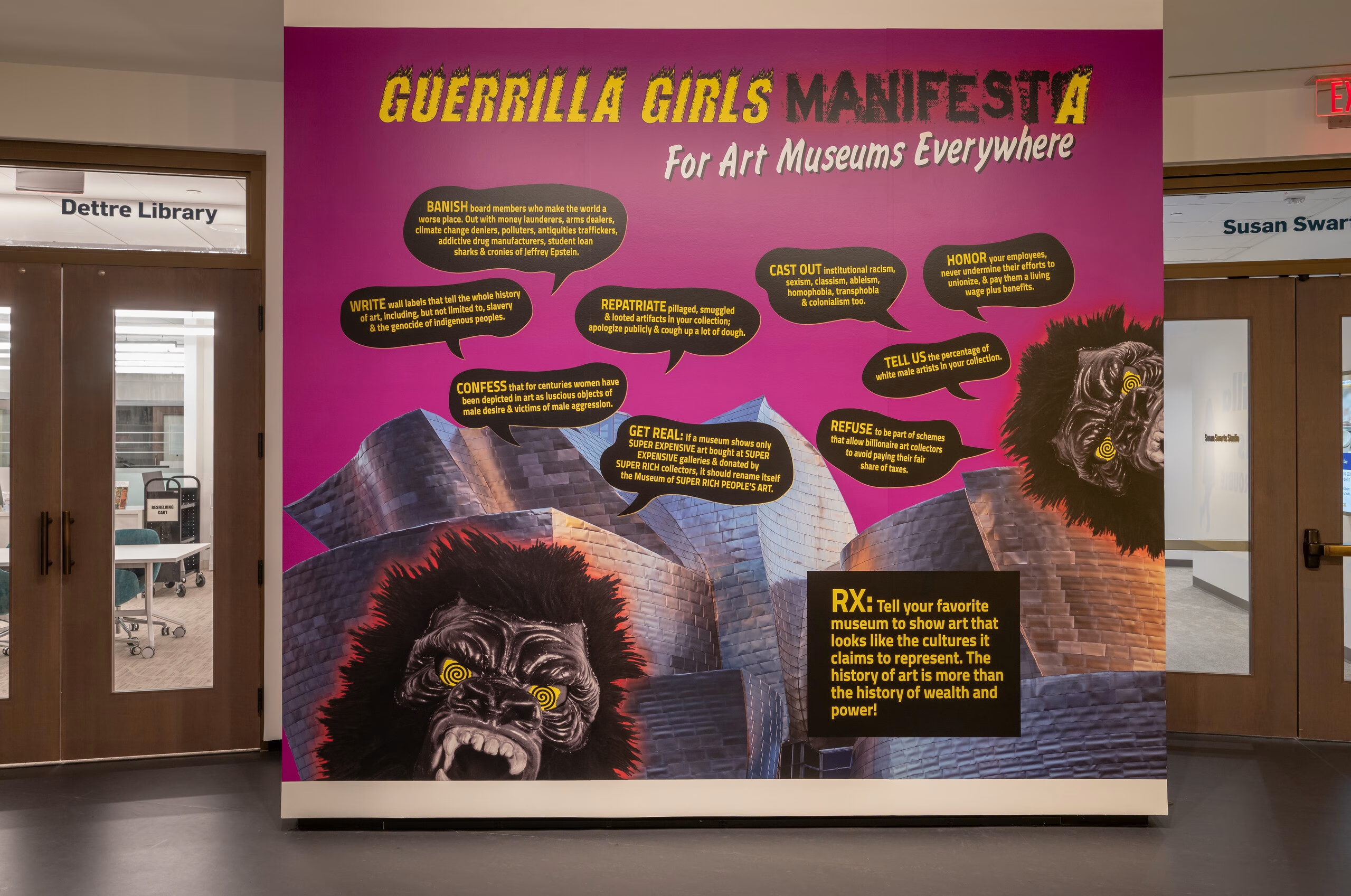
Still Making Trouble
The Guerrilla Girls’ passion for advancing inclusivity in the arts fuels NMWA’s work, too. Today, museums, galleries, collectors, and patrons are more aware of gender and racial inequality than they were in previous decades. Yet new generations continue to face hurdles surrounding representation, access to resources, pay disparities, and more. Through the years, the Guerrilla Girls have continued to make waves. Guerrilla Girls: Making Trouble highlights the collective’s intrepid work and encourages museum visitors to speak up in their own activism. For 40 years, the Guerrilla Girls have disrupted the status quo in the arts and beyond, and they are not slowing down.
